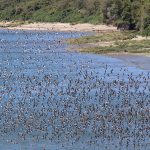In 2016, the Delta del Estero Real in Nicaragua joined the WHSRN network as a Site of International Importance for hosting more than 10% of the beldingi subpopulation of the Wilson’s Plover Charadrius wilsonia. Delta del Estero Real is situated in the southeast of the Gulf of Fonseca, a large bay on the Pacific coast of northern Central America shared by Nicaragua, Honduras and El Salvador. The WHSRN designation led to increased interest in the site, triggering the first tri-national shorebird count in the Gulf of Fonseca in January 2017. The survey was designed to collect baseline data on the numbers of shorebirds using the area as a wintering site, as well as to count the year-round resident shorebird species. Due to the success of the tri-national survey, a second survey was carried out in May 2018, intentionally later in the season to capture data on longer-distance migrants – those stopping at the Gulf of Fonseca during their northbound migration.
During the first tri-national survey, in January 2017, a total of 40,078 shorebirds representing 26 species was counted at a total of 72 sites within the Gulf of Fonseca. As could be expected, one of the more common species sighted was the Wilson’s Plover, with a total of nearly 3,000 individuals counted (approximately 40% of the beldingi subpopulation!) in the whole survey area. Other species with significant totals included the Semipalmated Plover Charadrius semipalmatus (4.027 individuals, 2% of its global population), Whimbrel Numenius phaeopus (1.156 individuals, nearly 3% of biogeographic population of subspecies rufiventris) and “Western” Willet Tringa semipalmata inornatus (5.218 individuals, just over 3% of its biogeographic population).
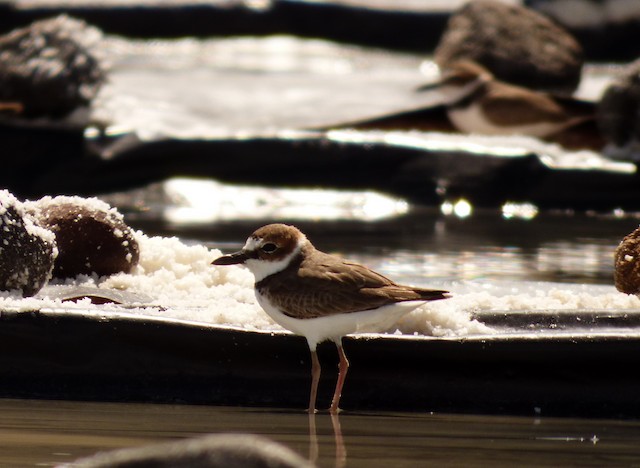
Wilson’s Plover (Charadrius wilsonia beldingi). Photo: Roselvy Juárez.
The tri-national survey in 2018 was carried out later in the year, focusing on the use of the area by species that migrate larger distances like Stilt Sandpiper Calidris himantopus, Pectoral Sandpiper Calidris melanotos, Buff-breasted Sandpiper Calidris subruficollis, White-rumped Sandpiper Calidris fuscicollis, Baird’s Sandpiper Calidris bairdii, and Wilson’s Phalarope Phalaropus tricolor. During this second survey, carried out in May 2018, a total of 6,055 individuals representing 30 species were counted at a total of 65 survey sites. Although significantly fewer birds were counted, a higher species diversity was observed, mainly due to the presence of long-distance migrants that winter as far south as the southern cone of South America.
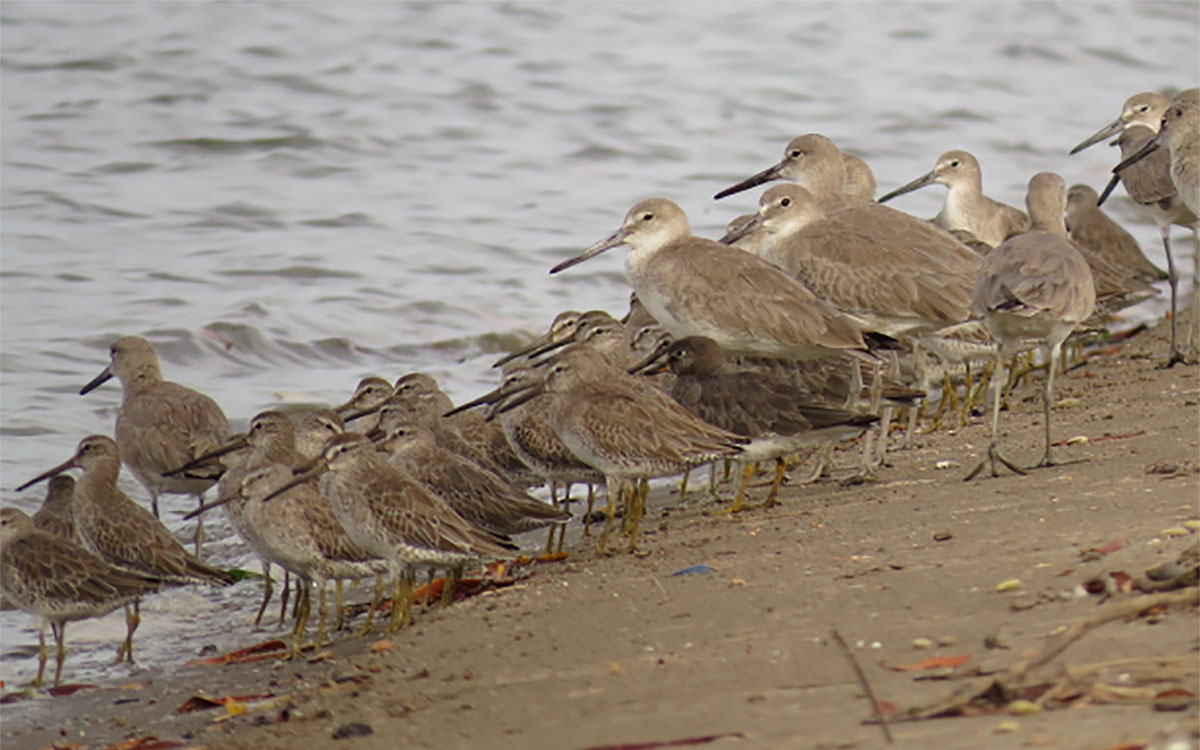
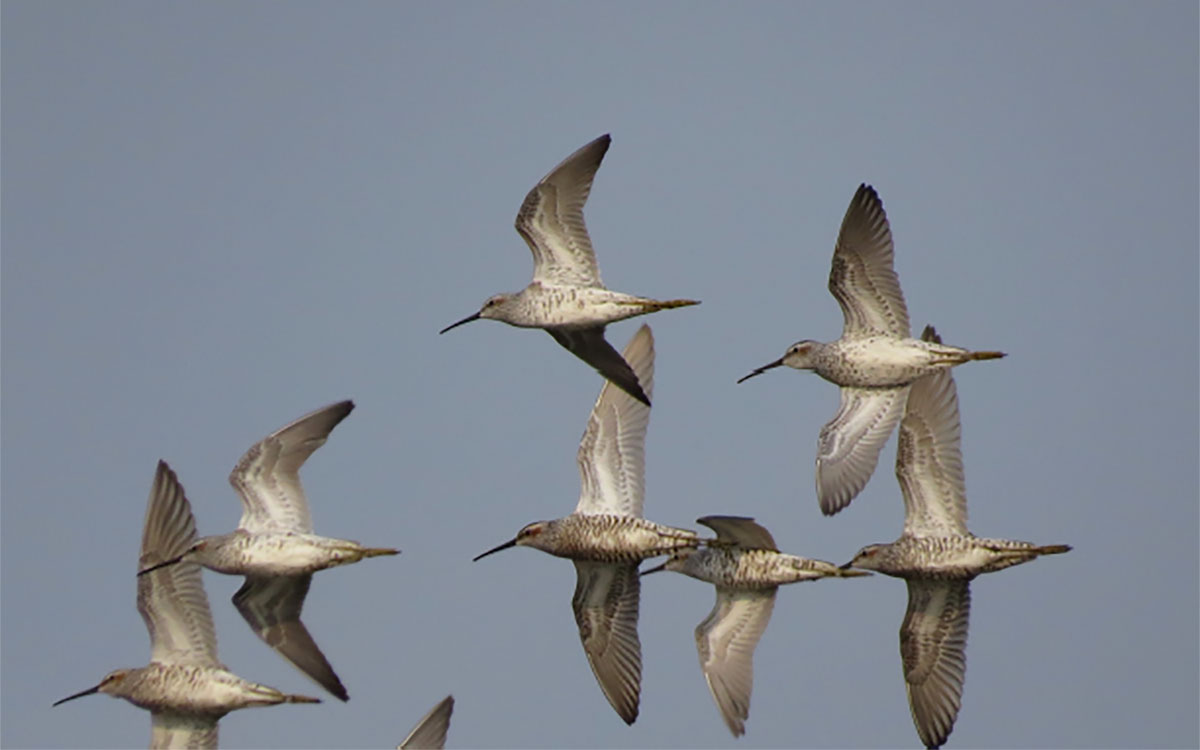
Short-billed Dowitchers (Limnodromus griseus), “Western” Willet (Tringa semipalmata inornatus), and one Surfbird (Calidris virgata), and a flock of Stilt Sandpipers (Calidris himantopus). Photos: John van Dort.
Both surveys also resulted in new information about the migration of American Oystercatchers that breed along the east coast of the United States. During the 2017 survey, an impressive 11 color-banded individuals were observed between Honduras, El Salvador, and Nicaragua. These individuals came from Massachusetts, Virginia, North Carolina, Georgia, and Florida.
In 2018, only one color-banded individual was observed, in Nicaragua. This American Oystercatcher was banded as a chick in 2017, along the coast of North Carolina.
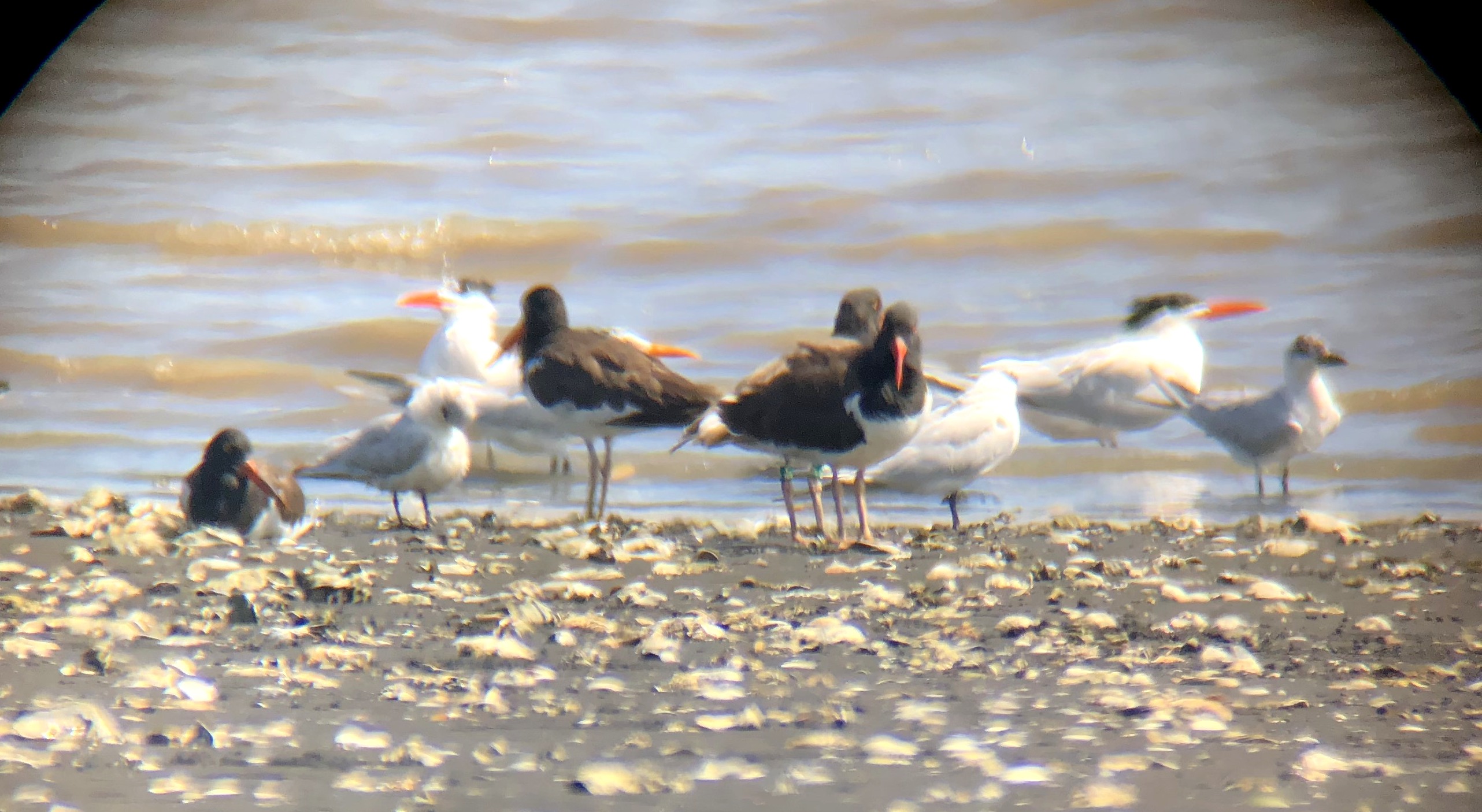
The one color-banded individual spotted during the 2018 survey in Nicaragua. This American Oystercatcher was banded as a chick in 2017, along the coast of North Carolina. Photo: Orlando Jarquín G.
A third tri-national survey is being planned for fall 2019, in hopes of monitoring how migratory shorebirds use the Gulf of Fonseca during southbound migration. Last month, during shorebird counts at Delta del Estero Real in Nicaragua, WHSRN partner organization Quetzalli Nicaragua spotted three banded American Oystercatchers (Haematopus palliatus) – two from Georgia, and one from North Carolina. The upcoming fall tri-national survey will be a great opportunity to look for more banded birds, continuing to illuminate the importance of the Gulf of Fonseca as a stopover site for migratory shorebirds.

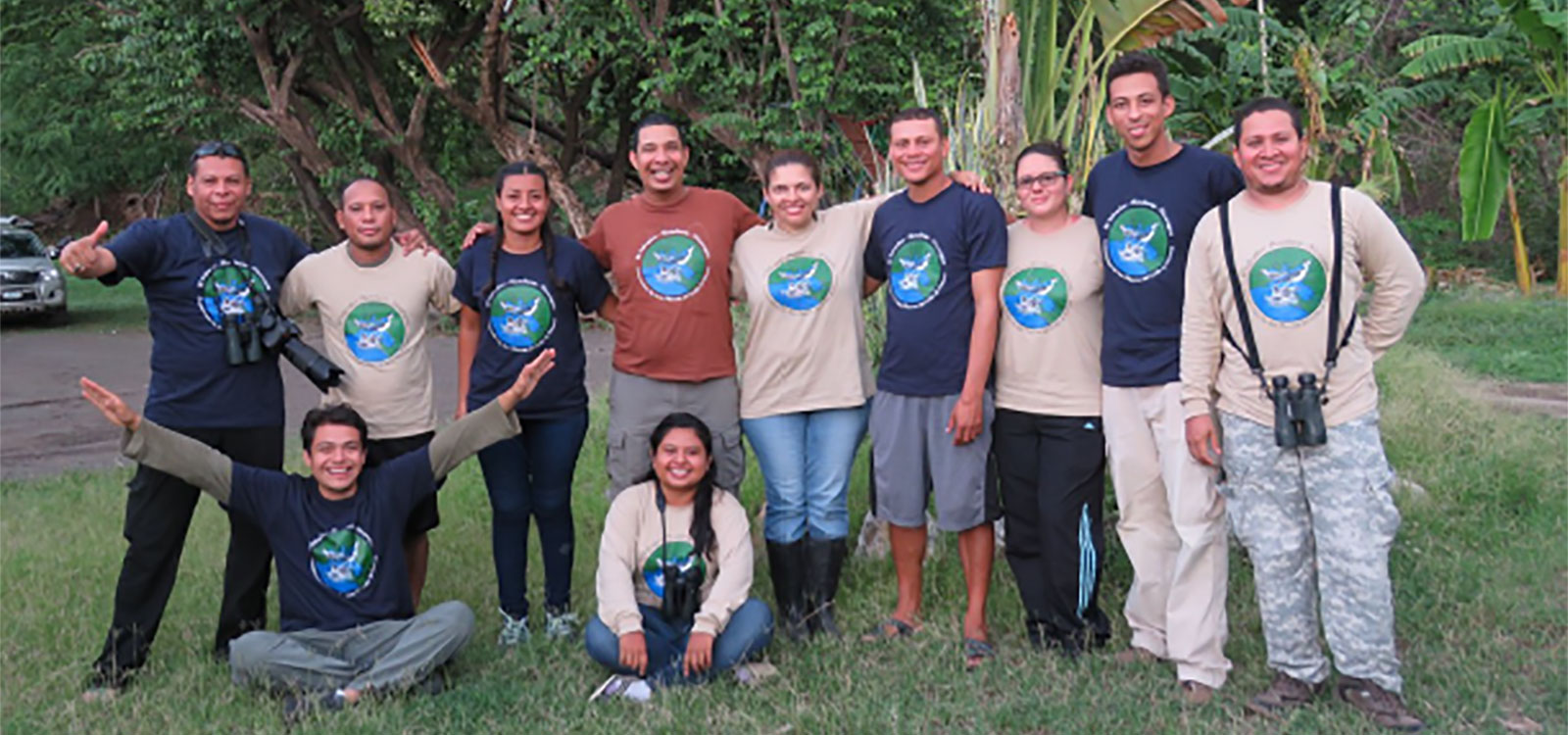
Left: One of the Honduran teams in the field discussing shorebird identification. Photo: ASHO. Right: Nicaragua team. Photo: Quetzalli Nicaragua.
For more information, please contact Arne Lesterhuis at alesterhuis@manomet.org.






